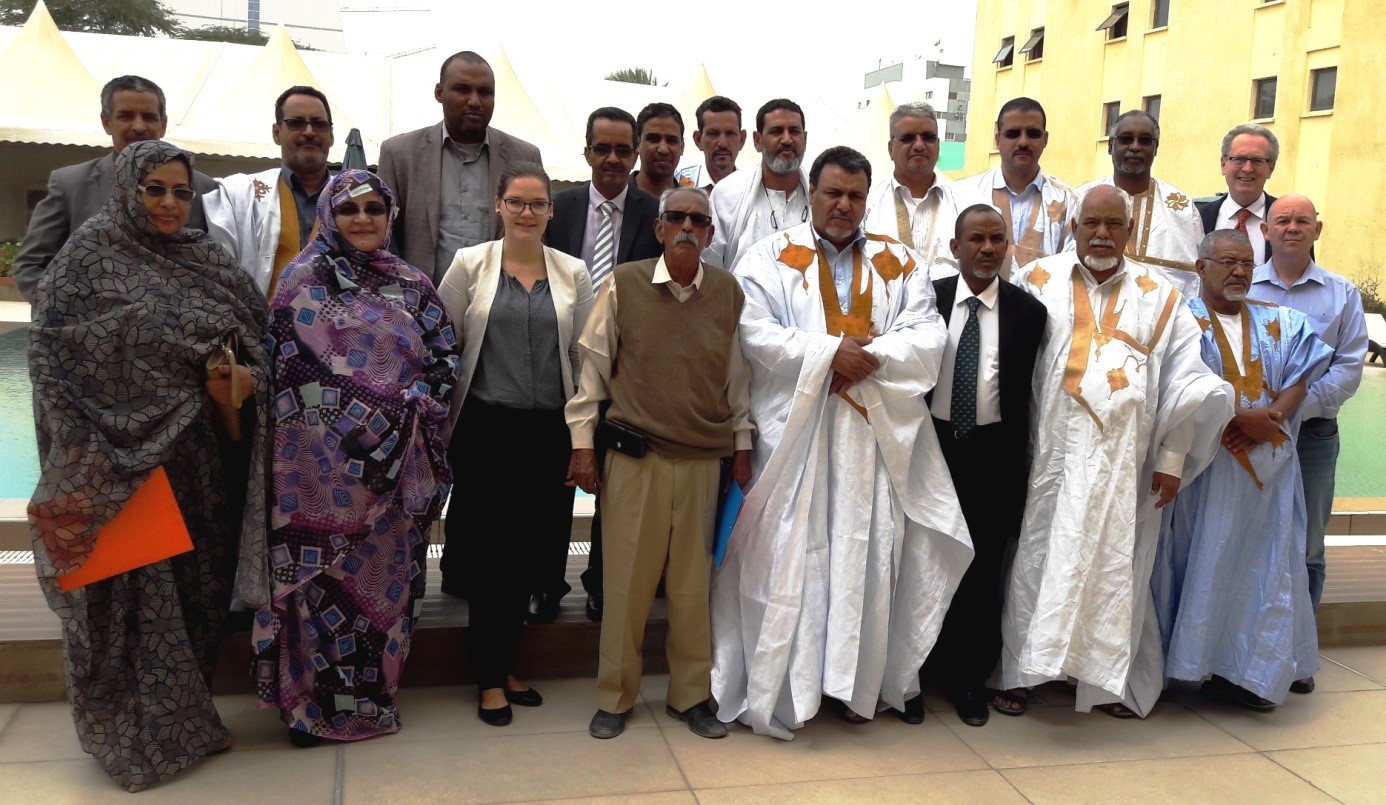Mauritania shares experience in providing first FiTI workplan

NOUAKCHOTT – 28 February 2018. In December 2018, Mauritania became the first country to be granted the official status of a FiTI Candidate country, after fulfilling all six FiTI sign-up steps.
According to the FiTI Standard, as part of this sign-up process, each implementing country’s FiTI National Multi-Stakeholder Group must provide a public workplan for the country’s first reporting period (A.6.).
The workplan of the National MSG forms the foundation for all FiTI activities and ensures that implementation activities are targeted to deliver the results desired by stakeholders. This workplan, which must be elaborated and approved by the National Multi-Stakeholder Group (MSG), must set out how the FiTI is being implemented and what issues the FiTI Process will focus on.
The Guidance Note “The sign-up steps for countries intending to implement the FiTI” provides an orientation to countries in elaborating their national Workplan, whilst giving them the possibility to choose the method that will be the most suitable to their national context.
Mauritania kindly agreed to share with other countries their approach for elaborating their workplan. This method was implemented during a 3-day workshop, which was organised with the support of the Deutsche Gesellschaft für internationale Zusammenarbeit (GIZ).
The methodology used by the FiTI National Multi-Stakeholder Group can be structured according to the following steps:
- Analysis of the Strengths, Weaknesses, Opportunities and Threats (SWOT) of the current FiTI process in Mauritania
- Analysis of the state of transparency in Mauritania for all transparency requirements 1-6[1] set out by the FiTI Standard (based on the participants’ perception at the time of elaboration of the workplan)
This important step had the objective to provide an initial picture of transparency in Mauritania and highlight any shortages/needs that the FiTI process would have to address. For this session, MSG Members were divided into two groups to assess the current transparency status of each of the Transparency Requirements. The assessment was made on a scale from 0 to 4, with 4=very satisfactory, 3=satisfactory, 2=shortcomings, 1=major shortcomings, 0=insufficient information)
Not only did this analysis allow to identify lines of action, it also allowed to collect baseline information for the monitoring of the project.
- Identification of strategic lines for the workplan
Based on the prior analyses, the National MSG identified four main action lines:
- Setting up of a FiTI National Secretariat (SN-FiTI) fully operational and effective;
- Strengthening the capacities of MSG Members and National Secretariat staff;
- Implementing the FiTI Standard effectively and sustainably; and
- Supporting communication and multi-stakeholder dialogue at the national, regional and international levels.
- Definition of activities for each strategic line based on the state of transparency for transparency requirements 1-6
Based on the analyses conducted at the 2nd stage, this step consisted in defining activities within each strategic line. For each activity, MSG Members reflected on the following information, which was distributed in five columns:
- Importance of activity ;
- Period (beginning / end ;
- Main results (expected from the specific activity) ;
- Responsible person(MSG / others) ; and
- Necessary resources.
This step led to a first preliminary draft of the Workplan.
- Identification of the needs to implement the workplan (financial, technical support, consultative support from partners, etc.)
- Elaboration/review of all actors with a direct or indirect interest in the FiTI
The stakeholder mapping must be elaborated by distributing all concerned actors amongst three categories:
- Key actors : Actors who, thanks to their knowledge and/or competencies, are able to influence the FiTI national process in a significant way; without their support, the process will not lead to the expected results.
- Primary actors : Actors who are directly affected by the FiTI process, in the perspective that they can benefit from it and/or be penalised.
- Secondary actors : Actors who are affected indirectly or temporarily by the FiTI process.
This stakeholder mapping is extremely important for the FiTI process as it allows to identify actors who are linked directly or indirectly to the process. Making such mapping therefore favours an inclusive process. It is even advised that such an analysis is made further ahead in the FiTI process, in the framework of a Baseline Study. In the case of Mauritania, this mapping was elaborated earlier in the sign-up steps with the support of GIZ.
- Identification of obstacles that can impede the completion of transparency requirements 1-6 and formulation of risk management measures.
The last analytical step of the workshop consisted in identifying in plenary all obstacles (risks) that could impede the implementation of the 2018-2019 workplan and in formulating measures that could address these risks. The objective of this session was to provide an overview of the perceived risk factors as well as the possibilities to reduce/eliminate these risks, overview to be analysed in more details whilst taking into account the levels of probability and importance of each risk in the near future.
- Identification of next steps and distribution of tasks
The final workshop report, in French, is available here.
Following these reflections, the final national Workplan of Mauritania was validated by Mauritania’s FiTI MSG on November 23th in Nouakchott.
In case of any question on the methodology and experience of Mauritania in elaborating their Workplan, please contact Mauritania’s National FiTI Secretariat: laminecam2000@yahoo.fr.
We thank Mauritania for sharing their experience once again!
[1] The FiTI Standard sets out 12 Transparency Requirements; however, the 1st FiTI report must only contain information on transparency requirements 1-6.
